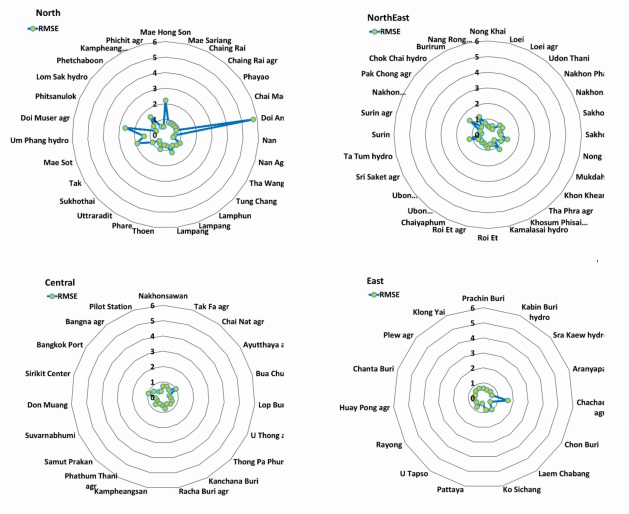The accuracy of the forecast of mean sea level pressure in May 2019 of Thailand by the Weather Research and Forecasting (WRF) model
Keywords:
Sea-level Pressure, WRF Model, Accuracy of ModelAbstract
Mean sea-level pressure is one factor that controls the weather. The weather forecast facilitates the planning of tourist activities, agriculture, transport, as well as the surveillance of natural disasters. Therefore, forecasting accuracy is required to ensure effective situation tracking and the reliability of the model. Restricted to the weather forecast in Thailand, this research studies the accuracy of the mean sea-level pressure forecast by the WRF model. The data such as wind, temperature, humidity, and air pressure at sea level is imported from the Global Forecast System for initial condition, and boundary condition. The results from the model are daily forecasts for May 2019 and the statistical methods used to test the accuracy of the model are Root mean square error (RMSE), Mean error (ME), Mean percentage error (MPE), Mean absolute percentage error (MAPE), %Average Accuracy, and Nash-Sutcliffe efficiency (NSE). The predictions based on the WRF are compared to the actual measurements from 118 meteorological stations in Thailand.
The evaluation of RMSE, ME, MPE, MAPE, %Average Accuracy, and NSE showed similar results. By demonstrating the accuracy of the WRF model, its effective usage was proved. The model gives a forecast value of atmospheric pressure at mean sea level greater than the actual value obtained from meteorological measurements. For Thailand, with no significant difference in local weather conditions, the most suitable criteria for analyzing the weather model accuracy are RMSE and ME. The difference between the forecast value and the actual value on a small scale of each region in Thailand is expressed more precise. Using more evaluation criteria may enable the discovery of additional features of the model.





